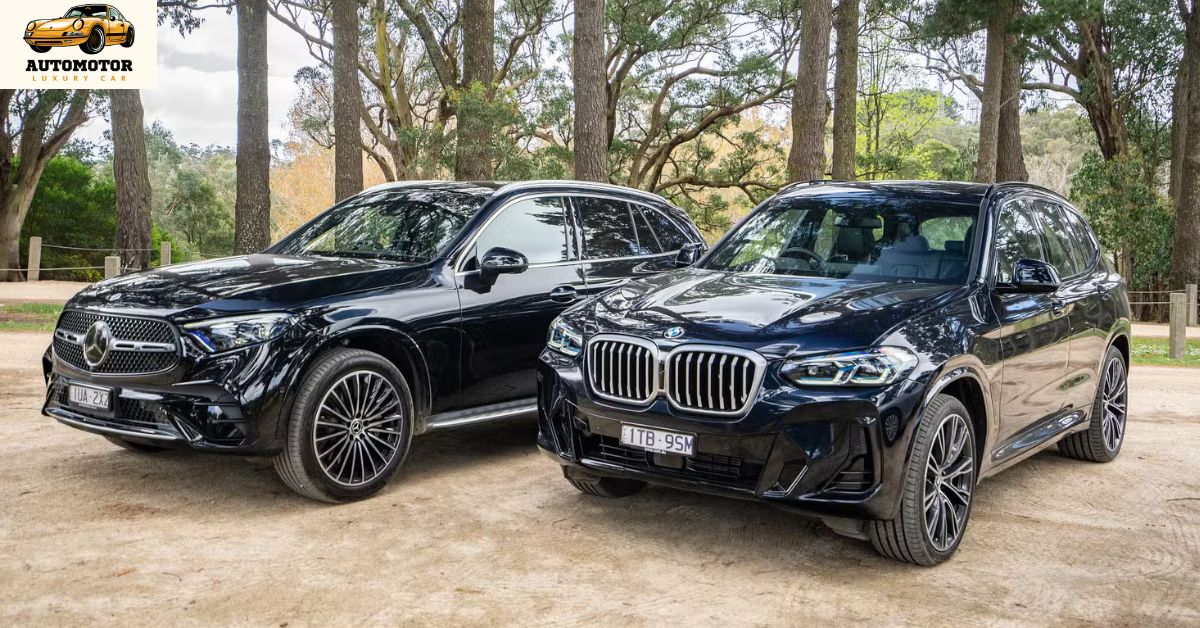In the realm of compact luxury SUVs, few rivalries are as fierce—or as closely matched—as the one between the Mercedes-Benz GLC and the BMW X3. Both are strong contenders for the top spot in this highly competitive segment, offering a blend of premium quality, advanced technology, performance, and everyday practicality. But which one comes out on top when we put them head-to-head? Let’s dive into the details and find out.
Exterior Design: Style vs Sport
The Mercedes-Benz GLC embodies elegance and refinement. Its smooth, flowing lines and subtle chrome accents project a more sophisticated, urbane appearance. The front grille, flanked by sleek LED headlights, carries Mercedes’ signature luxury DNA. The recently updated model has gained a more dynamic presence, but it still leans toward a polished look rather than aggressive sportiness.
In contrast, the BMW X3 delivers a more muscular and athletic stance. The kidney grilles are larger and more assertive, and the sharp creases across its body panels reflect BMW’s sporty character. It looks ready to pounce, especially in M Sport guise, which adds larger wheels and more aggressive trim.
Verdict: A tie, depending on taste—GLC for elegance, X3 for sportiness.
Interior and Technology: Comfort Meets Innovation
Step inside the Mercedes GLC, and you’re greeted by a cabin that oozes luxury. The latest model features a minimalist dash with a floating 11.9-inch central touchscreen paired with a 12.3-inch digital driver display. The MBUX infotainment system is one of the most advanced in the business, with intuitive voice commands and crisp graphics. Materials are top-notch throughout, with leather, wood, and metal finishes that feel genuinely upscale.
The BMW X3, while a little more conservative in design, has an interior that emphasizes functionality and driver orientation. It uses BMW’s iDrive 8.0 system, which can be controlled via touchscreen, rotary dial, or voice. It’s responsive and loaded with features, though some might find the interface slightly more complex than Mercedes’ system. The X3’s build quality is impeccable, and its seats are among the best in the class for long-distance comfort and support.
Verdict: Mercedes GLC takes a slight lead for its more modern, luxurious cabin and user-friendly tech.
Performance and Driving Dynamics: Sport vs Smooth
Here’s where the philosophies of Mercedes and BMW really diverge.
The BMW X3 has long been praised for its engaging handling and balanced ride. Even in its base form (sDrive30i or xDrive30i), it feels agile and responsive, with well-weighted steering and composed body control. The available turbocharged inline-6 in the M40i trim offers thrilling performance, going from 0 to 60 mph in around 4.4 seconds.
The Mercedes GLC prioritizes comfort over sportiness. Its steering is lighter, and its suspension is tuned for a plush ride, especially with the optional air suspension. The base GLC 300’s turbocharged four-cylinder is smooth and refined, though it doesn’t quite match the BMW in outright performance. The AMG variants (GLC 43 and 63) do bring the heat, but they come at a significantly higher price.
Verdict: BMW X3 wins for driving enthusiasts, while the GLC appeals more to comfort-seekers.
Practicality and Space: Everyday Luxury
Both SUVs offer generous interior space, though the BMW X3 has a slight edge in cargo capacity. With the rear seats up, the X3 provides around 28.7 cubic feet of space compared to the GLC’s 21.9 cubic feet. Fold them down, and the gap widens.
Rear seat legroom is about the same in both, suitable for adults on longer trips. The GLC may feel more snug due to its design, but it compensates with a quieter and more insulated cabin.
Both offer excellent driver assistance features, including adaptive cruise control, lane keeping assist, and automated emergency braking. Mercedes tends to bundle these in option packages, whereas BMW offers more as standard equipment in some trims.
Verdict: BMW X3 wins for practicality; GLC for serenity and comfort.
Pricing and Value
Pricing for both models starts in the mid-$40,000 range, but with options, it’s easy to breach $60,000. The GLC tends to be slightly more expensive when comparably equipped, though you may feel you’re getting more “wow factor” for the money. BMW’s slightly better fuel economy and standard feature set offer better value, especially for the base trims.
Verdict: BMW X3 offers more value per dollar, especially at lower trims.
Final Verdict: Which One to Choose?
- Choose the Mercedes-Benz GLC if you prioritize luxury, a serene ride, and cutting-edge tech in a refined package.
- Choose the BMW X3 if you want a more engaging driving experience, extra practicality, and better value.
